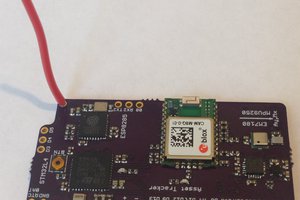1. Introduction and project goals
In the current world there is a constant pressure to connect everything with everything, preferably using no wires. There are dozens of technologies, each with its own set of features that allows an engineer to achieve that goal. This wide range of possibilities is both a blessing and a curse. This project aims to help one to choose the best communication standard for a product by providing an extensive comparison of four popular, 2.4 GHz based standards that are: WiFi, Bluetooth 2.0, BLE and ZigBee. The observation will be based on two main methods: analysis of standard s documentation and real life measurements of arbitrary chosen modules.
As there is no one suit-it-all solution, so there is also no one, best communication standard. Thats why all four of them will be analyzed in terms of usability in every of five use cases: home automation system, distributed, battery powered measurement system, industrial automation system, high data throughput systems and consumer, general usage products.
1.1 Choice of the modules
The project requires some modules to be chosen and tested in order to gather some real life data on the problem. The boards are: HC-05 for bluetooth 2.0, HM-10 for BLE, ESP8266 v12 for WIFI, MY-ZB010C-S for ZigBee. All of them are similar in terms of shape, size and most important - all of them use simple PCB track antenna, which allows the comparison, to be a bit more meaningful.
1.2 Analytical part - Characteristics of communication standards
[todo]
1.3 Analytical part - Characteristics of the chosen modules
[todo]
1.4 Experimental part - Measurements
Every measurement will be conducted using a set of two twin modules set up to form a network. Environment in which the tests will be taken should be an open space, preferably outside of a city to minimize problems related to an external noise. Parameters to be measured are: maximum transfer speed, range, power usage in sleep mode and bit energy.
2 Definitions
2.1 Measurements
- Maximum transfer speed - maximum number of real data bits transfered over the network per second. Test will be performed in ten measurements points, at 10%, 20%, 30%, 40%, 50%, 60%, 70%, 80%, 90% and 100% of the maximum theoretical range of the device. Every test will take 5 minutes to finish.
- Range - maximum distance at which modules transfer the data with at least 90% of the maximum transfer speed. The measurement consists of sequential transfer of data blocks, 10240 Bytes each. 99% of the blocks have to be transfered at 90% of the maximum transfer rate. The test will take 5 minutes to finish.
- Power usage in sleep mode - devices will be spaced apart the measured maximum range and their current draw will be measured for 30 minutes.
- Bit energy (aka power usage in transfer mode) - devices will be spaced by maximal measured range and set to continuous transfer at maximum achievable transfer in one direction. Current draw will be measured for both sender an receiver and used to calculate energy required to transfer/receive one bit. This value will include loses related to channel encoding, passing control data etc. Test will take 30 minutes.
2.2 Use cases
[todo]
 mrozo
mrozo

 Kris Winer
Kris Winer
 Manoj kumar
Manoj kumar

Hi, this looks like a nice study. And actually if you'd like to be a little bit ahead of time, I suggest you include the "Thread" as it's IPv6 over the 802.4.15 might replace Zigbee little by little. Zigbee after all is nothing more than a profile specification over the 802.4.15 which is common for Thread as well. The only difference is that with Thread we will have less headache in conversions from one network to another and we might manage a generic gateway out of the box so less lock-in with specific vendors or protocols.